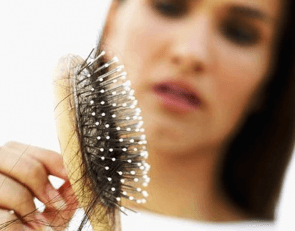Alopecia or hair loss is a phenomenon that affects all segments of the population, both men and women. In its most common form, alopecia is associated with the action of androgen hormones.
According to the latest statistical estimates, over the age of 50, half of men and 30% of women suffer from more or less serious problems associated with baldness.
According to the latest statistical estimates, over the age of 50, half of men and 30% of women suffer from more or less serious problems associated with baldness.
It is interesting to know that male androgenetic alopecia is usually not associated with an excess of androgens, but rather with the excessive sensitivity of hair follicles to their action. In fact, some hair is genetically predisposed to “turn on” such an androgen stimulus. It is no coincidence that androgenetic alopecia is a slow phenomenon in which the growth phase is shortened and the loss phase is more frequent, the hair becomes thin, depigmented, short.
Women with hyperandrogenism, seborrhea, hypertrichosis and hirsutism and polycystic ovary syndrome , are clearly more susceptible to alopecia.
Symptoms and features
The hereditary component is a hallmark of androgenetic alopecia. Much more prone to baldness are those who have baldness with their parents, grandparents.
Diagnostics
In women, timely diagnosis and therapeutic intervention are very important to stop the process of follicle involution before the problem becomes irreversible. A key examination for the diagnosis of alopecia is a trichogram. It is also important to assess the concentration in the blood of androgens, cortisol, thyroid hormones, estrogen, progesterone, gonadotropins (LH, FSH).
Treatment
Therapy for female androgenetic alopecia includes local and systemic aspects. First of all, drugs are used that should be applied directly to the scalp, such as minoxidil or estrone sulfate. Local injection of aqueous-alcoholic solutions of natural progesterone or its 17-hydroxylated derivatives is also effective.
Systemic pharmacological therapy is used in cases of hyprendrogenism, polycystic ovary syndrome. In the case of progestogen deficiency, synthetic progestogens are used. The most commonly used therapeutic solution for female alopecia is the administration of ethinyl estradiol and cyproterone acetate.
If there is a similar problem, you can ask for help from the specialists of the «Bogoliuby MC».

















